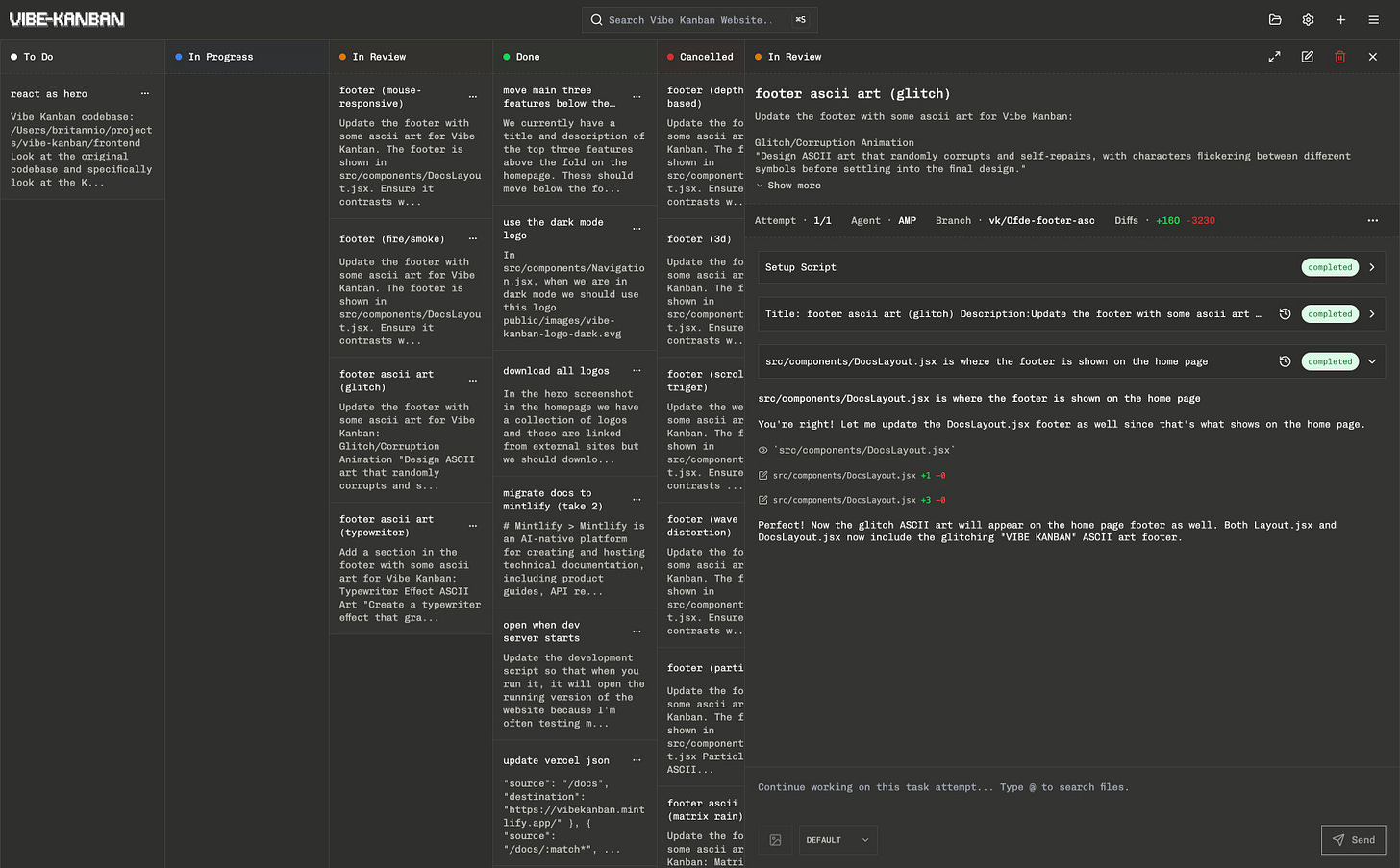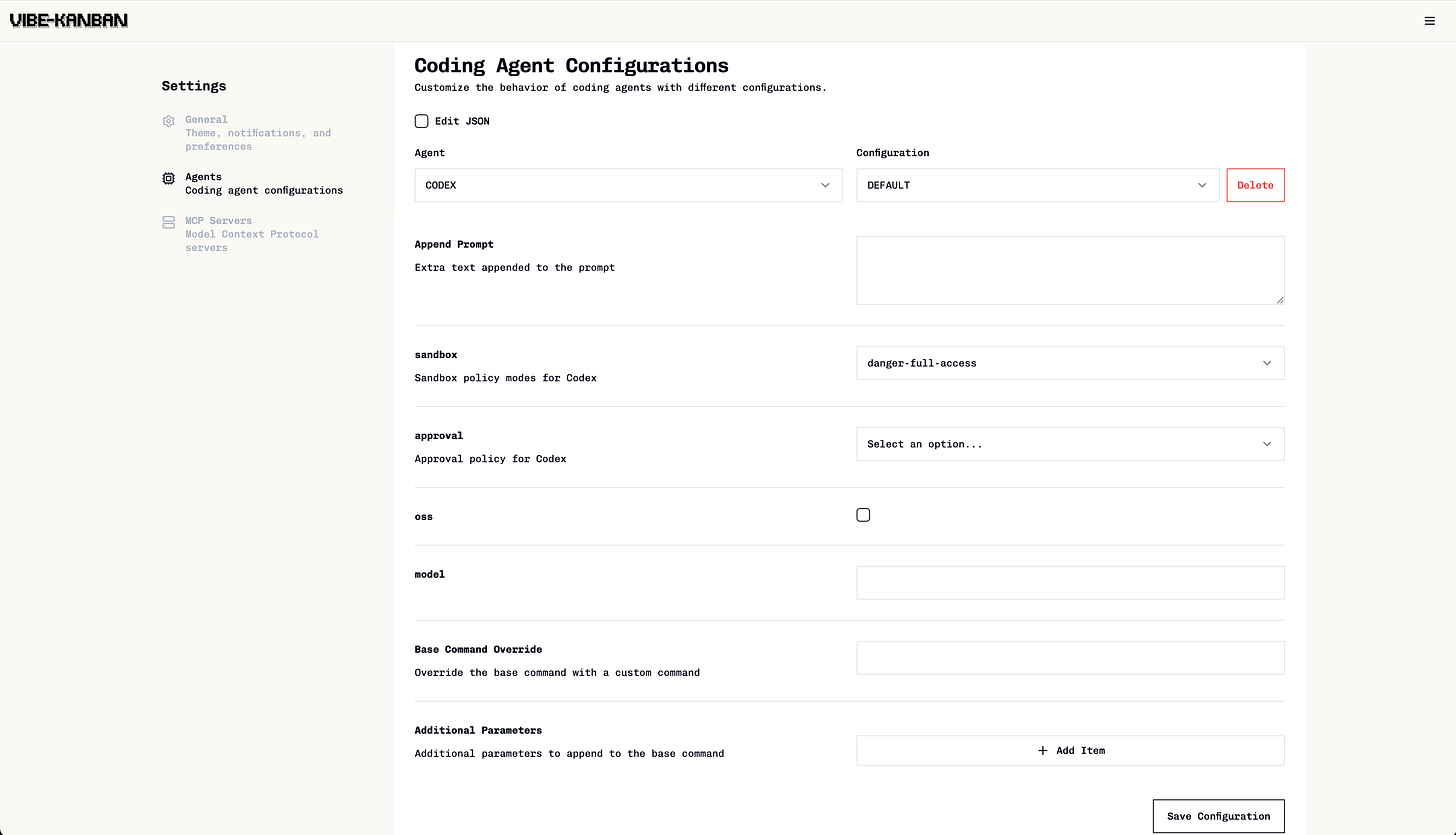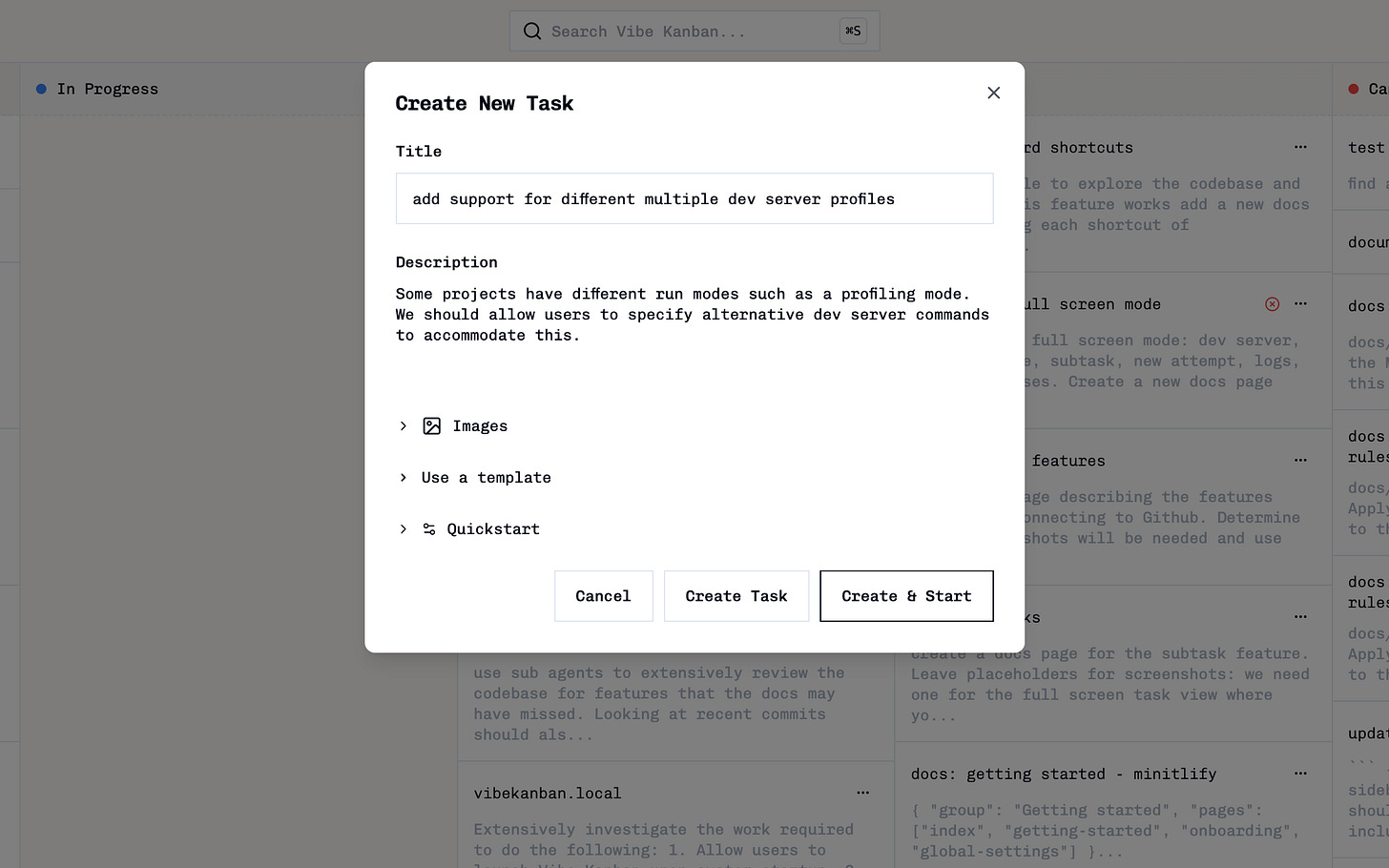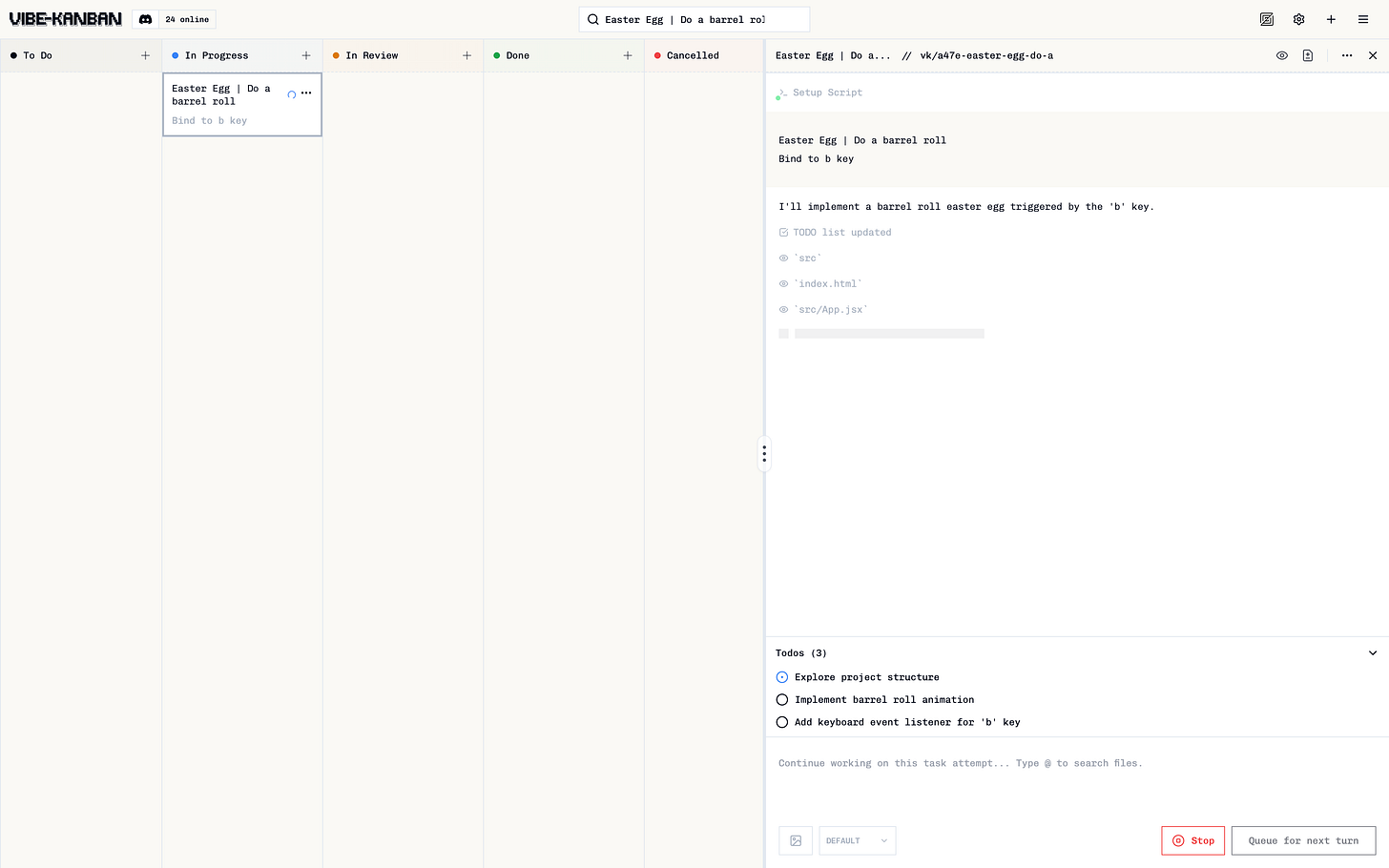Vibe Kanban Tool Review
A local web-based interface for managing parallel CLI coding agents
Command-line AI coding agents like Claude Code, Gemini CLI, Codex CLI, OpenCode, and GitHub Copilot CLI provide effective ways to execute agentic coding tasks locally. However, for users who prefer graphical interfaces or need to run multiple agents in parallel, these terminal-based tools present some limitations.
Vibe Kanban is an open-source tool from Bloop AI that addresses these challenges by providing a web-based interface for managing AI coding agent workflows.
Challenges with Terminal-Based Workflows
Terminal-based coding agents work well for many tasks, but they have limitations:
Interface preferences: Not all users prefer terminal-based interfaces. Some find graphical user interfaces easier to work with for managing complex workflows.
Parallel execution management: While it’s possible to run multiple instances of coding agents in parallel — either the same agent or different ones — managing this workflow using only terminal tools becomes complicated. Running multiple terminals and keeping them organized requires tools like tmux, and the complexity increases quickly.
Task organization: Working on many parallel agentic coding tasks requires the ability to organize and reason about the work. Terminal-based tools don’t provide built-in support for this kind of task management.
What Vibe Kanban Provides
Vibe Kanban is an orchestration platform for AI coding agents. The interface splits the screen into two sections. On the left is a Kanban board where tasks can be tracked across different stages: planning, in progress, in review, and done. On the right is an interface for following and interacting with the AI coding agent.
Supported Agents
Vibe Kanban works with many popular command-line coding agents:
Claude Code
Codex CLI
Gemini CLI
OpenCode
GitHub Copilot
Amp
Qwen Code
Cursor CLI
Each agent’s configuration options can be controlled through Vibe Kanban, and different profiles can be saved for later use.
Installation and Setup
Running Vibe Kanban requires a single command:
npx vibe-kanbanThis starts a local web server and opens the web interface in your browser. Users must authenticate with their chosen coding agents outside of Vibe Kanban before first use, following each agent’s standard authentication process.
The application binds to a random free port by default, though a specific port can be set using the PORT environment variable.
Core Workflow
Creating and Managing Tasks
After connecting to a GitHub repository, users can create tasks. When creating a task, it gets assigned to a specific agent configuration. The experience is similar to remote coding agents like GitHub Copilot’s coding agent or Codex Cloud.
Tasks move through columns on the Kanban board based on their status:
To do: Newly created tasks
In Progress: Tasks with active agent execution
In Review: Completed task attempts
Done: Merged tasks or PRs
Cancelled: Tasks that were stopped before completion
Users can switch between different tasks on the board and track multiple agents working in parallel.
Task Execution
When a task starts running, Vibe Kanban orchestrates the agent to work in its own branch and git worktree. This keeps the main workspace clean and prevents conflicts between concurrent tasks.
The right-hand pane displays the agent’s operation through a streaming interface that shows:
Agent reasoning and thought process
Commands being executed
File operations and changes
Tool calls to MCP servers
Progress through the implementation
Users can interact with the running agent by adding messages to guide its work.
Reviewing and Completing Work
After the agent completes its work, users can review the generated diffs directly in the interface. The tool provides options to create pull requests once the code review is satisfactory.
The interface also allows starting development servers to test the application, with logs displayed alongside the live preview.
Use Cases
Vibe Kanban provides value in scenarios where:
Multiple coding agents need to run concurrently on different tasks
Users want a graphical interface instead of terminal-only interaction
Task organization and tracking across multiple parallel workstreams is needed
Workspace isolation is important to prevent conflicts between concurrent agent tasks
The tool organizes work that would otherwise require managing multiple terminal windows and manual coordination between different agent instances.
Technical Details
Vibe Kanban runs agents with permission-skipping flags enabled by default (--dangerously-skip-permissions or --yolo) to allow autonomous operation without constant approval prompts. Each task runs in an isolated git worktree, which are ephemeral and automatically cleaned up after execution completes.
Projects can include setup and cleanup scripts that run automatically before and after agent execution. These scripts can handle tasks like dependency installation, linting, or formatting.
The tool is open source under the Apache 2.0 license and available on GitHub.
Learn More from Louis Knight-Webb, CEO of Bloop AI
To learn more about Vibe Kanban and the vision behind it, join us for a talk with Louis Knight-Webb, creator of Vibe Kanban and co-founder and CEO of Bloop AI. The talk is scheduled for Wednesday, November 12th. Register here.








